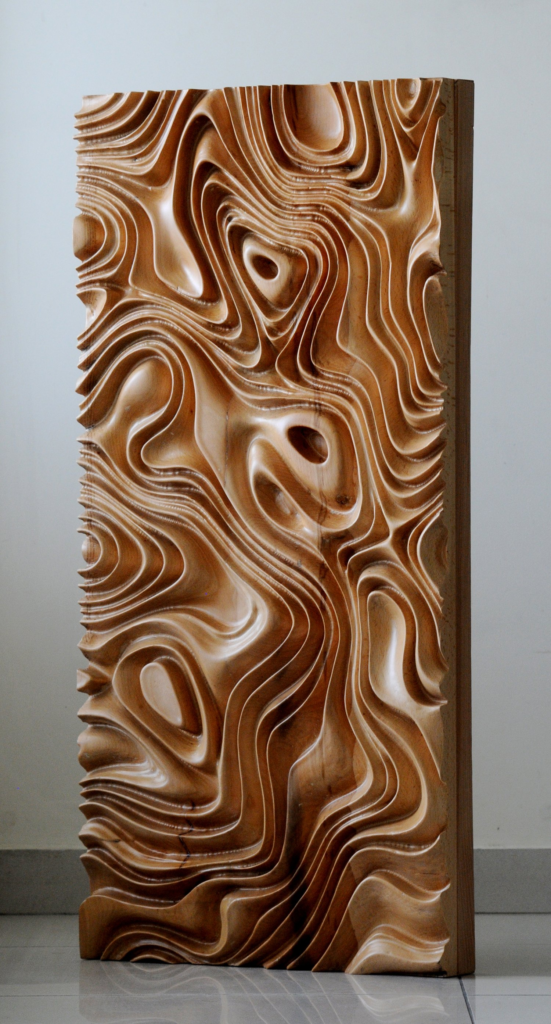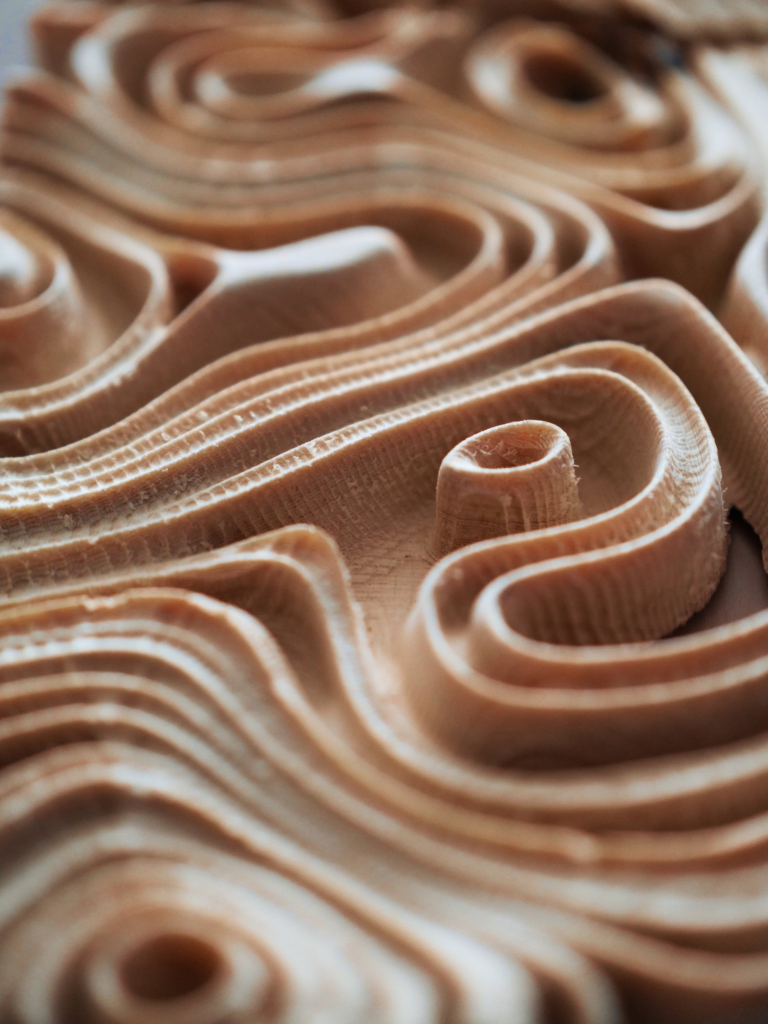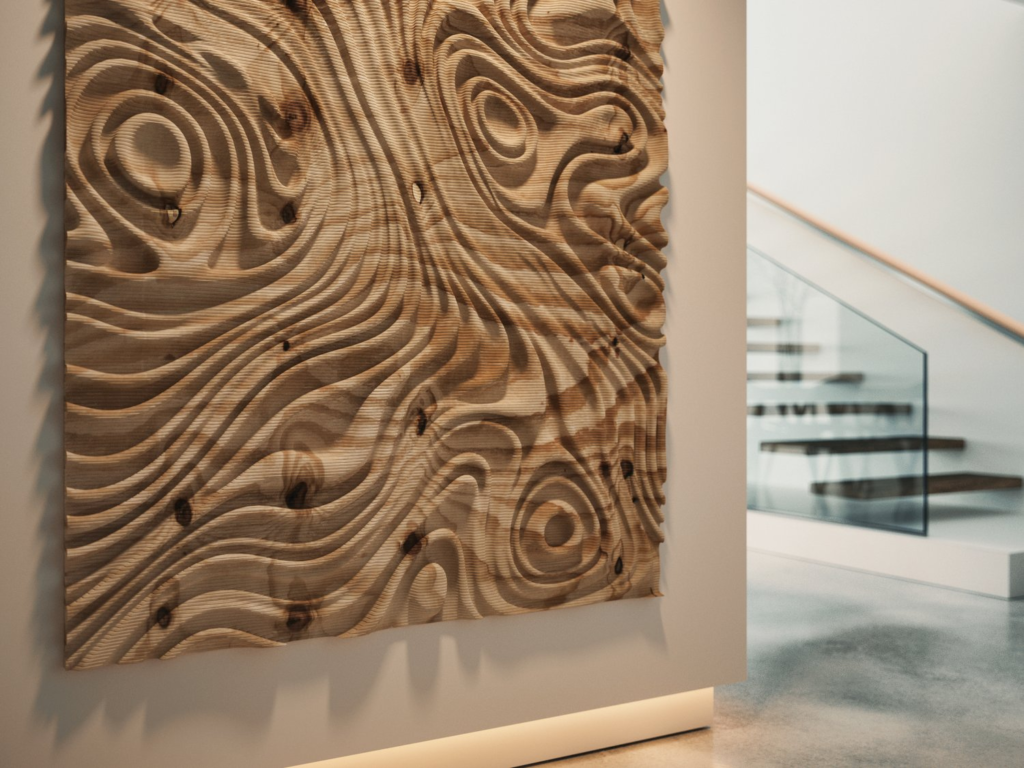For my final project I would like to explore incorporating computational design into musical instrument making. My idea is to produce a wooden tongue drum utilizing the CNC machine to produce wooden designs, both decorative and functional, for the drum. I enjoy playing instruments and have dabbled in creating a few different instruments, so I’m excited to use computation in doing so.
Deliverables
I will to produce a wooden tongue drum where the shapes of the tongues are computationally generated. I will probably have to hand tune the tongues but will also investigate what sizes and shapes will get me closer to the desired pitches. The outside of the drum will also be decorated with computationally designed and CNC cut wooden pieces.
Related Works
https://www.cs.columbia.edu/~cxz/publications/metallophone.pdf
For designs on the sides, I am currently inspired by the works of Rebal Jaber, specifically Liquid Wood
https://www.rebaljber.com/work/liquid-wood



I am similarly inspired by the work of agatakycia, ISOpatterns
Another inspirations is of course, people who have built wooden tongue drums. This video is a particularly good video in which they also use a CNC machine for cutting the tongues, though the design was created in Illustrator rather than computationally generated.
Timeline
- Week of Oct 30 – Research of specific wood materials/glue I will need for this project, and order/purchase materials
- Week of Nov 6 – Learn how to implement Rhino Grasshopper with CNC
- Week of Nov 13 – Begin designing pattern of sides using Grasshopper
- Week of Nov 20 – Design tongue pattern and finish design of sides. Become more familiar with CNC machine
- Week of Nov 27 – Use CNC machine to cut pieces
- Week of Dec 4 – Complete assembly and tuning of instrument
Hey Lauren, I think this is a great idea. I would love to hear what sounds different patterns make. I am also curious about how your choice of wood affects the sounds. Since you are planning on using the CNC router, it could be fun to combine a couple of your interests. You could mill an undulating surface into the to top and then cut through the drum pattern. I bet the different thicknesses of wood would also affect the sound. I’m excited to see what you will make!
Hi Camila, thank you! I am also interested in possibly making multiple removable tops so that the drum could be played with different notes/results depending on the which pattern is being used. I’m unsure using screws or someother method of making it removal would compromise the resonance of the drum though, but I would definitely like to explore the versatility of that! I’ve also read that different woods produce different sounds so I will research that more as well. I really like the idea of the top undulating! I will think about that more:)
This is a very neat system. When you say that you need to hand tune the drum will you cut the wood computationally and then modify it by hand after that?
Hi Erin! Yes, the pitch that vibrates depends on several factors, I believe length and volume and wood type, amongst possibly others. So typically when people make these drums they cut the tongues and test the pitches and then remove wood from the bottom of the tongues (so you can’t see the removed voids) in certain places in order to raise or lower the pitch. I would ideally like to computationally generate tongues that are more optimized for my desired pitches so I don’t have to do as much tuning, but I imagine I will have to do some.